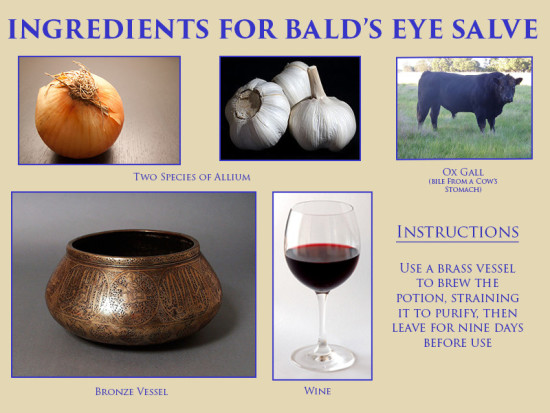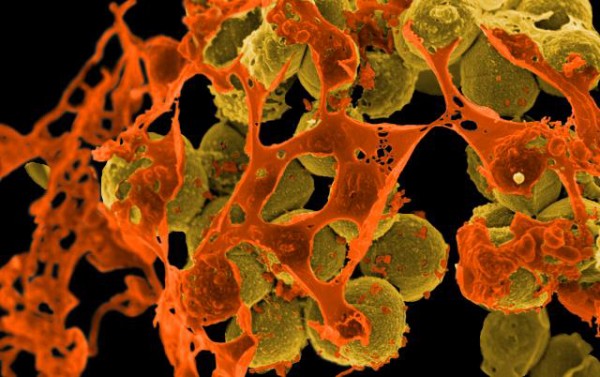Modern innovations have successfully treated traditionally devastating diseases. Yet it is sometimes challenging to confront evolving public health threats such as the anti-vaccination fad. There is a constant push to improve technology and the use of resources, but some public health threats develop at a pace that worries many public health professionals. This especially holds true for antibiotic-resistant pathogens.
Fortunately, some success in addressing the modern public health concern of antibiotic-resistant bacteria has been demonstrated in a cure found in a 10th century book, Bald’s Leechbook. This old English remedy, coined as “Bald’s potion” or “Bald’s eye salve”, is for treating styes, which are infections of eyelashes usually caused by staphylococcus aureus.
Creating a modern version of this old remedy was a joint effort at the University of Nottingham between microbiologists and doctor Dr. Christina Lee, Associate Professor of Viking Studies. Dr. Lee’s discovery started with investigating the potential effectiveness of old remedies in a modern setting. She translated the recipes in The Leechbook, which was then used by Dr. Freya Harrison, who led the lab work trying variations of “Bald’s eye salve”.
Dr. Harrison was motivated to test “Bald’s eye salve” by how its ingredients, in other studies, have affected antibiotic-resistant pathogens. She stated, “We thought that Bald’s eyesalve might show a small amount of antibiotic activity, because each of the ingredients has been shown by other researchers to have some effect on bacteria in the lab.” For example, allicin extracted from Allium species has been shown to limit the proliferation of Staphylococcus epidermidis. The recipe was surprisingly specific in its requirements. Some ingredients, such as the wine, were not needed, but others, such as a brass vessel, were essential. The team had to obtain the precise measurements of stomach-turning ingredients such as cow bile salt.
- Two species of Allium (garlic, and onion or leek).
- Wine and oxgall (bile from a cow’s stomach).
Procedure: Use a brass vessel to brew the potion, straining it to purify, then leave for nine days before use.

The recipe as distilled by researchers. Source: Katy Cohen
What “blew away” Dr. Lee and Dr. Harrison is that this revolting, millennia-old recipe surpassed the “golden standard” of antibiotics, vancomycin, by eliminating over 90% of bacteria in infected mice. Vancomycin success rates in some MRSA treatments, for example, have reached as low as 50%. Incredibly, the mice were infected with none other than the dreaded Methicillin-resistant Staphylococcus aureus (MRSA), an antibiotic-resistant pathogen.
This novel antibiotic instills hope and holds great implications for the future of medicine and other scientific knowledge. Old English is usually delegated to the likes of Chaucer. However, without interdisciplinary expertise, this antibiotic would have been lost in the annals of history. Perhaps future solutions in the battle against antibiotic-resistant pathogens and other public health grapples will require such interdisciplinary teamwork.
Feature Image Source: NIAID










